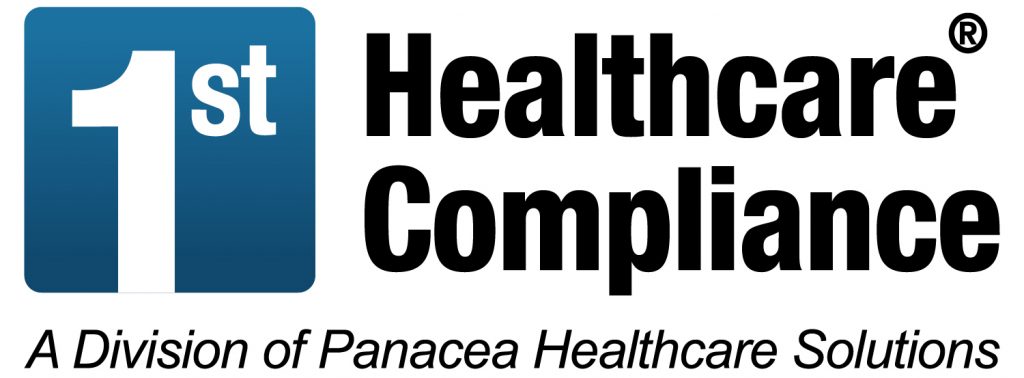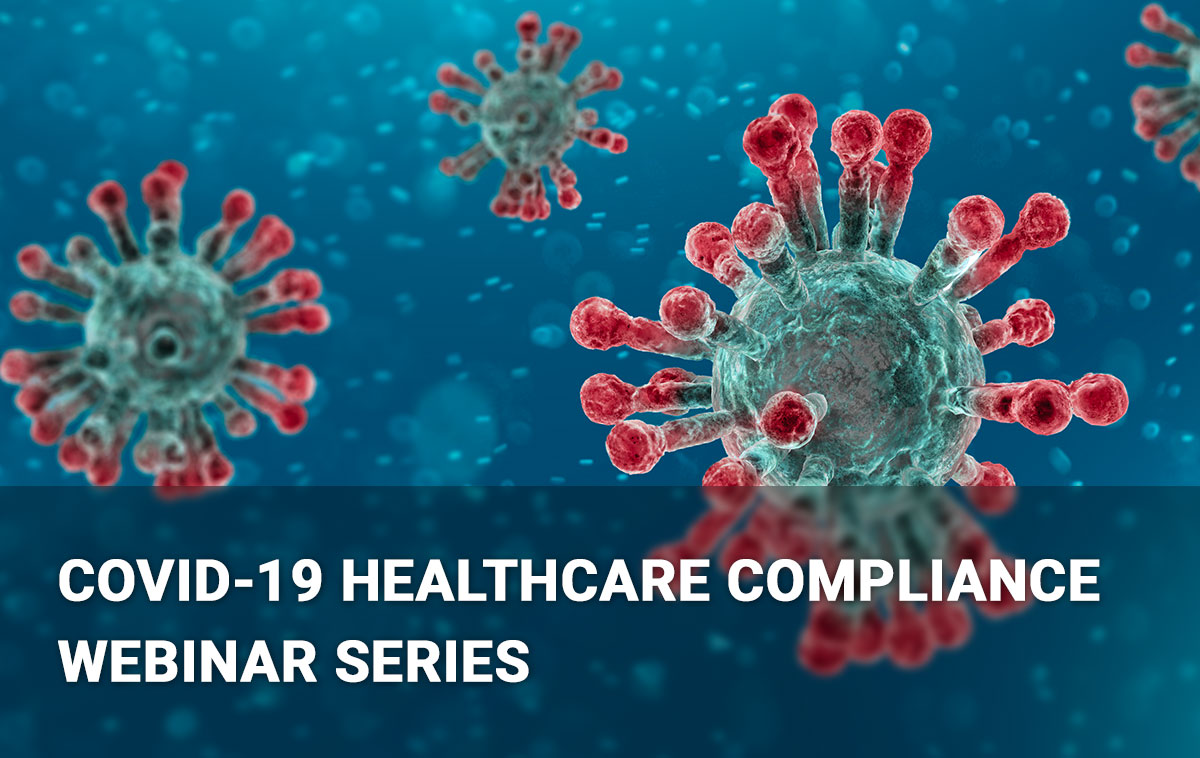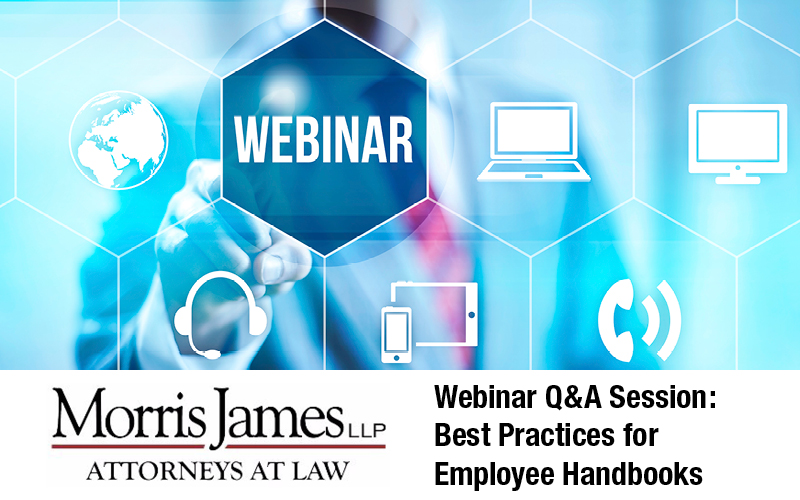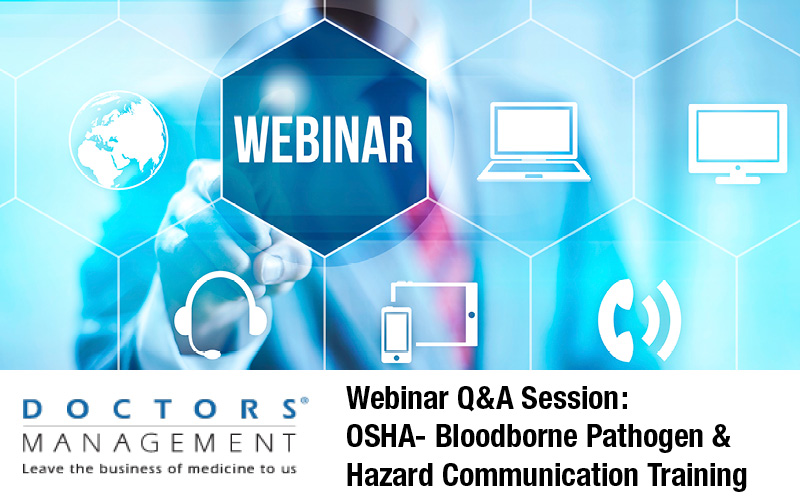COVID-19 Healthcare Compliance Webinar Series
 During this time of heightened anxiety and uncertainty, we know you are looking for answers about the impacts of the COVID-19 pandemic as you strive to take care of patients and staff. Our team at First Healthcare Compliance understands your need for up to date and accurate information and we’re offering a series of complimentary webinars by experts in various fields of healthcare compliance. Please join us for this important virtual learning and as always, get in touch with questions and suggestions. We’re here for you!
During this time of heightened anxiety and uncertainty, we know you are looking for answers about the impacts of the COVID-19 pandemic as you strive to take care of patients and staff. Our team at First Healthcare Compliance understands your need for up to date and accurate information and we’re offering a series of complimentary webinars by experts in various fields of healthcare compliance. Please join us for this important virtual learning and as always, get in touch with questions and suggestions. We’re here for you!
Available On-Demand: “The TeleHealth Revolution to Fight COVID-19” by Stephen Bittinger, Esq. of Nexsen Pruet’s Health Care Practice Group, Watch Now
This presentation covers the sweeping changes in TeleHealth across all payors to fight COVID-19 and how to implement these services. Learning Objectives:
1. Learn the Major CMS Changes to TeleHealth
2. Learn the Major Private Payor Changes to TeleHealth
3. Learn the Essentials of Implementing COVID-19 TeleHealth Changes
Available On-Demand: “Coronavirus and Its Impact on HIPAA, Telecommuting, and Patient Care,” by Rachel V. Rose, JD, MBA of Rachel V. Rose – Attorney at Law, P.L.L.C. Watch Now
In 2014, our presenter, Rachel V. Rose, JD, MBA, a Houston-based attorney who also teaches bioethics to medical students at Baylor College of Medicine (Houston, Texas), wrote an article, Ebola Misdiagnosis Raises Liability Concerns and was quoted by MedPage Today as an expert in the article Point of Contention: The Law and Ebola Quarantines – How might court actions on the Ebola quarantines affect public health?
This webinar focuses on Coronavirus pandemic and its application to HIPAA, Telecommuting and Force Majeure provisions. The particular areas, which will be covered are as follows: (1) brief overview of the Coronavirus, quarantine and the allocation of resources from a bioethics perspective; (2) HIPAA – Privacy and Security Rule Requirements; (3) teleworker requirements; & (4) force majeure contractual provisions. At the end of this one-hour program, participants should have a semblance of the following:
- HIPAA – the parameters of disclosing a coronavirus diagnosis, as well as maintaining Privacy Rule and Security Rule compliance when requiring employees or contractors to work from home;
- Force majeure contractual clauses and potential interpretations during a pandemic; and
- Government mandated quarantine – individual rights versus public health, as well as the allocation of resources.
Tuesday, April 7th @1:00 pm ET, “COVID-19 for Healthcare Workers” by Channing D. Sheets, MSEd, RVT, RBP, Senior Safety Engineer and Epidemiologist at Cal OSHA, Register Here.
This presentation brought to us by a biosafety officer and epidemiologist provides background information on the virus, its etiology, quarantine measures, and control measures for the healthcare setting. The learning objectives of this presentation:
- Discuss COVID-19 Etiology and Epidemiology
- Discuss COVID-19 Quarantine Measures
- Discuss Precautions for Healthcare Workers
Thursday, April 9th @12:00 pm ET, “Compliant Coding & Billing For TeleHealth During COVID-19” by Sonal Patel, Health Care Coder and Compliance Consultant for Nexsen Pruet, Register Here.
This webinar is based on both the March 31, 2020 unpublished Interim Final Rule, as well as the Interim Final Rule officially published in Federal Register on April 6, 2020 to provide clarity, and to dispel confusion providers, practice managers, coding and billing personnel have encountered over the past few weeks since CMS has relaxed the previous, and pre-COVID-19 rules and regulations for TeleHealth services.
The learning objectives of this presentation:
- Understand how to compliantly document, code, and bill for TeleHealth services during the public health emergency (PHE)
- Understand CMS and OIG relaxations and waivers during this PHE
- Understand types of services involved in TeleHealth and telemedicine
Tuesday, April 14th @12:00 pm ET, “Funding in the Time of COVID-19” by Neil Johnson, Managing Partner, & David Opalek, Director of Lawrence, Evans & Co., LLC. Register Here
This webinar will provide a discussion on the current financial markets and impact of businesses during COVID-19. It will include a summary of CARES Act funding and where to go to take advantage of government financing and include a discussion on alternative financing options.
Objectives for the Presentation:
1. Understanding business issues on healthcare companies as a result of COVID-19
2. Strategic alternatives for funding during COVID-19, lines of credit, factoring, bank loans, private loans, bonds, sale-leaseback
3. Highlights of the recently passed CARES Act and funding available
Wednesday, April 29th @1:00 pm ET, “Aerosol Transmissible Disease Standard (ATD) using California Standards as a Model” by Channing D. Sheets, MSEd, RVT, RBP, Senior Safety Engineer and Epidemiologist at Cal OSHA. Register Here
This presentation will briefly describe the elements of an ATD plan and include some published case studies. Learning objectives:
- Elements of Aerosol Transmissible Disease Plan
- Implementing an Exposure Control Program
- Exposure Investigation: Case Studies
Tuesday May 12th @12:00 pm ET, “HHS Final Rules, Patient Access to PHI & Health Apps Intersect” by Rachel V. Rose, JD, MBA, principal of Rachel V. Rose – Attorney at Law, P.L.L.C. Register Here
On March 9, 2020, HHS announced the promulgation of two final rules – the ONC Final Rule and the CMS Final Rule. The fundamental objective is to expand an individual patient’s control over his/her health data. One aspect requires insurance plans to share health data with their patients in a format suitable for their phones or other device of choice. How does this impact provider liability in light of the Healthcare Apps Guidance issued by HHS? The three goals of the presentation are as follows:
- Explain the two new final rules, as well as the potential impact on providers;
- Review the Healthcare Apps Guidance, which relates to HIPAA liability; and
- Provide suggestions for integrating the new rules while continuing to strive towards HIPAA compliance.






